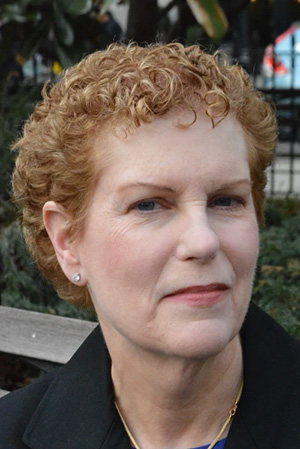Antisemitism at New All-Time High in US

Antisemitism is on the rise in the United States. According to the Anti-Defamation League (ADL), antisemitic incidents reached an all-time high in our nation in 2021. This averages more than seven incidents every day. The ADL, which has tracked these incidents for more than 40 years, predicts that the official 2022 numbers will be similar.
There is another alarming trend. Antisemitism is shifting from the fringes towards the mainstream, emanating from tastemakers and influential people, including musicians, athletes, actors, and politicians. In the past several months, rapper Ye (formerly known as Kayne West) expressed admiration for Hitler, former president Donald Trump dined with Holocaust denier Nick Fuentes, and talk show host Whoopi Goldberg repeated historically inaccurate and offensive statements about the Holocaust.
Will historians look back at our times and call them “the high tide of American antisemitism?”

We sat down with Professor Pamela Nadell to explore the issue. Nadell is AU’s Patrick Clendenen Chair in Women’s and Gender History, as well as the Director of the Jewish Studies Program. She is the author of America’s Jewish Women: A History from Colonial Times to Today, winner of the 2019 National Jewish Book Award's "Jewish Book of the Year." She is currently writing a book about the history of American antisemitism and has been invited to a White House ‘listening session’ this month to help the Biden administration plan a strategy for combatting antisemitism.
Q. You have said that we are living in a period that “is going to be called the high tide of American antisemitism.” Why now? What are the forces behind this?
A: The years between World War I and World War II have been called the “high tide of American antisemitism.” In that era, Ford Motor Company’s Henry Ford owned the newspaper The Dearborn Independent. The popularity of its series The International Jew: The World’s Problem, which ran for 91 weeks, made this local paper the second most widely circulated paper in the U.S. During the Great Depression, when the radio priest Father Charles Coughlin accused the Jews of manipulating the world’s economy, he reached, at his peak, 40 million listeners.
Today, celebrities, politicians, and other high-profile figures spout antisemitism on social media. White nationalists used its platforms to plan their “Unite the Right” rally where they marched across the University of Virginia campus chanting “Jews will not replace us” (2017). The gunman who murdered eleven Jews on a Sabbath morning in a Pittsburgh synagogue posted about Jews committing “white genocide” (2018).
Meanwhile, on city streets Orthodox Jews encounter, almost daily, shouts, spitting, shoving, and slaps. Graffiti painted on a fence near my home read “No Mercy for Jews.” Progressive organizations, including some on college campuses, demand that Jews renounce their support for Israel. Yet, 80 percent of American Jews say caring about Israel is essential or important to their Jewish identities.
By the time this wave of contemporary antisemitism subsides, the historians of the future may be forced to call our era “the high tide of American antisemitism.”
Q. In a recent interview, you noted that the word antisemitism, first coined in 1879, explains a “modern recent hatred of the Jews that is based on the belief that the Jews are purportedly a different race.” How does antisemitism differ from earlier expressions of animosity toward Jews?
A. The German journalist Wilhelm Marr used “Antisemitismus” to expose the real bedrock of Jewish distinctiveness and danger and to distinguish it from traditional anti-Judaism. Because the Gospels recorded the Jews urging the Romans to execute Jesus, Christians condemned Jews as Christ’s murderers. Viewing them as perpetual enemies, Christian theology demanded that Jews be punished for all time for their horrific crime. Across the ages in Christian lands, such punishments included persecutions and expulsions. But Christian mercy allowed Jews to convert and wipe away their iniquity.
Then the modern era brought rapid and disturbing change. Beginning with the French Revolution, the Jews won political emancipation across Europe. Their new equality had hurled them into positions of political and economic power over Germans. How, Marr wondered, had such a disaster occurred.
He turned to the pseudoscientific ideas, popularized in the nineteenth century, about the races. Claiming that race was biologically determined and that racial groups shared immutable physical, intellectual, and social characteristics, social theorists developed a hierarchy of the races. They concluded that Jews belonged to the purportedly inferior Semitic race and Germans to the ostensibly superior Aryan race.
“Antisemitism” was coined to signify that animosity towards the Jews was no longer based on their enmity to Christendom but rather on the danger they posed to Aryans. Marr founded Germany’s Anti-Semites League to unite under the banner of antisemitism everyone fighting against the so-called Semitic race.
Q. It’s difficult to talk about antisemitism in the United States without acknowledging that is not new; it’s been here for 350 years. Can you walk us through some of this history?
A. Antisemitism arrived in America along with immigrants’ rucksacks. In 1654, when the first twenty-three Jews, having fled persecution in colonial Brazil, landed in New Amsterdam, its Governor Peter Stuyvesant tried to expel “this deceitful race, — such hateful enemies and blasphemers of the name of Christ.” He failed, but he signaled that antisemitism would be part of the American experience.
Here are just some events from this long history. Every single one of the colonial-era Jewish cemeteries was vandalized. Organizations hoping to convert the Jews included officers like John Quincy Adams. During the Civil War, General Ulysses S. Grant expelled the Jews from his military district. In the decades that followed, Jews found themselves barred from hotels, even ones where they had formerly stayed. In 1915, in Atlanta, the Jewish pencil-factory manager Leo Frank, convicted of murder, was lynched after Georgia’s governor, questioning his guilt, commuted his death sentence to life imprisonment. A few years later, Columbia and Harvard led the way in instituting Jewish quotas, and hundreds of colleges and universities followed. Apartments advertised “Gentiles only. The bombing of Atlanta’s Hebrew Benevolent Congregation, known as “The Temple,” in 1958 is just the best known of a series of attacks on synagogues, Jewish community centers, and rabbis’ homes. At the tail end of the twentieth century, the day after a Jewish family moved into a house in Georgetown, they awoke to find swastikas outside their new home.
Q. Last year, you joined Pulitzer Prize-winning New York Times journalist Bret Stephens for a debate about the future of Jewish life in America. You found many things to feel optimistic about — can you share them?
A. We debated “Is the Golden Age of American Jewry Over?” Bret Stephens argued that rising antisemitism marks its end. Yet, neither of us are prophets. What the future holds is unknown. But I see so many signs of American Jewish vitality that, despite growing antisemitism, I cannot claim this golden age is over.
After World War II in the wake of the greatest disaster in Jewish history, American Jews seemed to enter a golden age. The barriers that had kept Jews out of hotels, neighborhoods, universities, and businesses began to fall. Jews ascended to until then unimaginable heights.
If that era launched this golden age, then the thousand people in the room at our debate during the American Jewish Committee’s Global Forum (and where I saw AJC staffers, AU alumni Claire Bailey and Aaron Bregman), proves that American Jewish dynamism has not abated yet. The American Jewish population increased from 6.7 million in 2013 to 7.5 million in 2020, and its extraordinary energy is manifested in 9,500 Jewish communal organizations.
Finally, speaking as the author of the history America’s Jewish Women, I must highlight another remarkable sign of this golden age. Our debate took place in June 2022. A half century before, the first American woman became a rabbi, paving the way for more to follow. How could this golden age be over, I asked, now that one half of the Jewish people, who for millennia were written out of history, are in the forefront of making it.
Q. We have all read about antisemitic incidents close to home, including on our campus. Do you have any guidance for ordinary people and how they can respond in a meaningful way to these events? What can we all do to fight hate?
A. My answer won’t surprise you. Education is key to fighting hate. Let me share something from my first-year Complex Problems Seminar “Antisemitism: Enduring Hate.”
This fall unleashed a barrage of hate against American Jews from the rapper Ye (formerly Kanye West), the basketball star Kyrie Irving, and others. For weeks, mainstream and social media reported what they said, what they continued to say, and how their fans and sponsors reacted. Appearing as the guest host on Saturday Night Live right after the midterm elections, the comedian Dave Chappelle riffed on what had happened to Ye and Kyrie. He then made some observations, which, depending on one’s perspective, either did or did not cross the antisemitic line.
I viewed Chappelle’s monologue with my students so that we could analyze its antisemitic tropes, which we had been studying all semester. Watching this with the class was revelatory. On screen, the TV audience was laughing loudly. In my classroom was dead silence.
When the monologue ended, I asked the students what they thought. An international student said that a year ago, he would have laughed. After studying antisemitism, he could no longer do so. Another student, whose parents are immigrants, was incensed that Chappelle’s references to Jewish persecution alluded only to the Holocaust. Where, he asked, was the comedian’s understanding of the long history of the persecution and discrimination inflicted on Jews.
Few people have the luxury of spending a semester studying what has been called “the longest hatred.” Yet, my remarkable students affirm that the key to unmasking antisemitism is studying it.